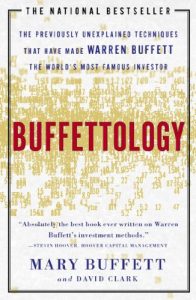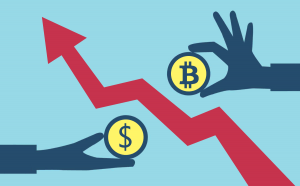Содержание

Treasury bond spreads investors pay attention to are the difference between the 10-year and two-year Treasury bond, as well as the 10-year Treasury bond versus the three-month Treasury bill. Yield curve usually slopes upward and means the long-term U.S. government securities pay a higher interest rate than the short-term ones. Whenever the central bank reverses its monetary stance and alters the shape of the yield curve it sets in motion either an economic boom or an economic bust. Historically most recessions in the US are preceded by significant declines in the differential or interest rate spread between the 10-year T-bond and the 3-month Treasury security. Typically, this narrowing in the spread occurs many months before the onset of the recession.
This is fairly unusual and researchers regard this as among the best indicators that a U.S. recession is coming on a 6-18 month view. This indicator is among the best track records in forecasting recessions across a range of economic variables. It has successfully called all recessions in recent decades without any false alarms. That’s impressive, and among a sea of indicators, this one deserves some attention. But when it comes to default risk, Treasury bonds are seen as being as close to risk-free as an investor can get. Therefore, changes in the Treasury yield curve are almost entirely due to changes in market conditions, as opposed to changes in the creditworthiness of the bond issuer.
President Richard Nixon announced that the U.S. dollar would no longer be based on the gold standard, thereby ending the Bretton Woods system and initiating the era of floating exchange rates. In January 2010, the gap between yields on two-year Treasury notes and 10-year notes widened to 2.92 percentage points, its highest ever. Outsourced Chief Investment Officer service to institutional investors. He has previously served as Chief Investment Officer at Moola and FutureAdvisor, both are consumer investment startups that were subsequently acquired by S&P 500 firms.
How Yield Curves Work (Or, Short-Term Rates Impact Long-Term Rates)
Consult a financial professional before making any major financial decisions. The Structured Query Language comprises several different data types that allow it to store different https://forexbitcoin.info/ types of information… Rose, Peter S. Money and Capital Markets, Irwin, Burr Ridge, Illinois, See Chapter 9 for additional information on the structure of interest rates.
- A bond’s market value at different times in its life can be calculated.
- The vertical or y-axis depicts the annualized yield to maturity.
- Riding the yield curve is an active trading strategy where a bond trader buys bonds with a maturity longer than their investment horizon.
- Receive-fixed swaps and long futures positions replicate this exposure in the derivatives market.
That’s when potential stock gains are likely to be more than they’d get from bonds. ■changes in the humped shape of the curve, sometimes called butterfly twists. Bond B is a 20-year, callable bond with a coupon rate of 9%, also selling at par.
Liquidity premium theory
Additionally, investors use its shape to help forecast interest rates. Haworth is watching how corporations react to the inverted yield curve. Most companies managed to maintain a strong financial position through 2022, but Haworth says corporate revenue and earnings will be under increasing pressure. “There is less of a payoff from capital spending in the current interest rate environment,” says Haworth. “This could ultimately be one factor driving the economy toward a recession.” Consumer spending is the other important factor affecting the economic outlook, and to this point, it has remained positive.
Deeply inverted Treasury curve narrowly misses reaching 41-year milestone – MarketWatch
Deeply inverted Treasury curve narrowly misses reaching 41-year milestone.
Posted: Thu, 09 Feb 2023 08:00:00 GMT [source]
The slope of the yield curve is one of the most powerful predictors of future economic growth, inflation, and recessions. One measure of the yield curve slope (i.e. the difference between 10-year Treasury bond rate and the 3-month Treasury bond rate) is included in the Financial Stress Index published by the St. Louis Fed. A different measure of the slope (i.e. the difference between 10-year Treasury bond rates and the federal funds rate) is incorporated into the Index of Leading Economic Indicators published by The Conference Board.
How Market Mechanisms Influence the Yield Curve
Once the Fed has lowered the policy interest rate the widening in the yield spread gets consolidated. When yield curves slope upward, which they do most of the time, we say that they are normal sloping. The graph of a normal-shaped curve shows us that long-term interest rates are higher than short-term ones. The flat yield curve indicates that short- and long-term rates have the same yield. A downward-sloping or inverted yield curve tells us that long-term rates are lower than short-term ones. Yield curves can have more complicated shapes in which they first slope up and then down, humped shaped , or down and then up.
What happens when the yield curve is upward flat or inverted?
Importance of the Yield Curve
The shape of the curve helps investors get a sense of the likely future course of interest rates. A normal upward sloping curve means that long-term securities have a higher yield, whereas an inverted curve shows short-term securities have a higher yield.
If market interest rates on 15-year instruments fall from 6.5% to 5.2%, what is the expected yearly yield on the bond you are currently holding? When the yield curve starts to shift toward an inverted shape, it is perceived as a leading indicator of an economic downturn. Such interest rate changes have historically reflected the market sentiment and expectations of the economy. A longer period of time increases the probability of unexpected negative events taking place. Therefore, a long-term maturity will typically offer higher interest rates and have higher volatility.
Easing Inflation Fears
The most frequently reported yield curve compares the 3-month, 2-year, 5-year, and 30-year US Treasury bond rates. The yield curve is used as a benchmark for determining mortgage or bank lending rates. By looking at the yield curve of bonds having equal credit quality but differing maturity dates, the slope of the curve will give you a good idea of the future interest rate changes and economic activity. A yield curve is the relationship between interest rates and time, and is determined by plotting the yields of bonds with equal credit quality against their maturities.
At the end of the two- year period, the investor would have the same return if she had purchased a two-year bond and held it to maturity. Because the Pure Expectation Theory states that both strategies have the same expected return, the interest rate on the two-year bond must equal the average of the two one-year interest rates. If the one-year was yielding 1.5 % and the investor expects the interest rate on the one- year bond next year to be 2%, she can calculate the expected return over the two- year holding period. The rate of return on the two-year bond is the same as the return on holding the two one-year bonds. Investors usually interpret a steepening yield curve as a sign of a growing economy. But higher inflation typically accompanies an expanding economy.
Is an upward sloping yield curve good?
Analysts look to the slope of the yield curve for clues about how future short-term interest rates will trend. When there is an upward sloping yield curve, this typically indicates an expectation across financial markets of higher interest rates in the future; a downward sloping yield curve predicts lower rates.
Also here this process cannot be sustained without the Fed’s policy of raising the policy interest rate. Once the Fed raises the policy interest rate, the narrowing in the yield spread consolidates. In what follows, we focus on the yield curve, which represents the term structure of interest rates for government or benchmark securities, with the assumption that all promised principal and interest payments take place. Fixed-income securities, which trade at a spread above the benchmark to compensate investors for credit and liquidity risk, will be addressed later in the curriculum.
In a previous example, the one-year rate influenced what kinds of rates investors were willing to accept on two-year bonds. Just as, next year, a two-year bond becomes a one-year bond, a one-year bond becomes an overnight loan in 364 days. So, if shorter-term rates are expected to be high and stay high, longer-term rates will be high as well. If shorter-term rates are expected to fall and stay low, longer-term rates will fall. And there are no shorter short-term rates than the fed funds rate, which makes the power to set that rate a very powerful policy lever, indeed. The time or term structure of interest rates, often referred to as “yield curves,” moves continuously as bond prices respond to changes in interest rates.

Curve steepness, which is the difference between short-term rates and longer-term ones. As an example, by looking at the rates for one year and two years, we can imply where the market expects a specific one-year rate to be in a year’s time. Aggregate DemandAggregate Demand is the overall demand for all the goods and the services in a country and xrp (ripple) trading is expressed as the total amount of money which is exchanged for such goods and services. It is a relationship between all the things which are bought within the country with their prices. Although a yield curve is usually plotted as a continuous curve, data for all possible maturity dates of a given debt instrument are usually not available.
Financial InstitutionsFinancial institutions refer to those organizations which provide business services and products related to financial or monetary transactions to their clients. Some of these are banks, NBFCs, investment companies, brokerage firms, insurance companies and trust corporations. Non Parallel Shifts – When the yield across different maturity horizons changes at a different level in both magnitude and direction.
This is because, even if there is a recession, a low bond yield will still be offset by low inflation. However, technical factors, such as a flight to quality or global economic or currency situations, may cause an increase in demand for bonds on the long end of the yield curve, causing long-term rates to fall. Falling long-term rates in the presence of rising short-term rates is known as “Greenspan’s Conundrum”. Note that using Mises-Rothbard ideas, we have concluded that an upward sloping yield curve is the result of investors’ expectations of an easy-money interest rate policy.
This leads to a situation where the forward rate is greater than the expected future zero rates. This theory is consistent with the empirical result that the yield curve tends to be more upward-sloping than downward-sloping. Expectation theory says that long-term interest rates should reflect expected future short-term rates. It argues that forward interest rates corresponding to certain future periods must be equal to future zero interest rates of that period.
Likewise, daily inversions in September 1998 did not result in negative term spreads on a month average basis and thus do not constitute a false alarm. However, a positively sloped yield curve has not always been the norm. Through much of the 19th century and early 20th century the US economy experienced trend growth with persistent deflation, not inflation. During this period the yield curve was typically inverted, reflecting the fact that deflation made current cash flows less valuable than future cash flows.
What happens when the yield curve is downward sloping?
An inverted or down-sloped yield curve suggests yields on longer-term bonds may continue to fall, corresponding to periods of economic recession.
In this chapter, we sought to provide a superficial introduction to a small fraction of the huge number of yield curve models and model types. Each of the models that we discussed above is of the single factor type in that each allows for a single instantaneous rate to be randomly generated and then builds the entire yield curve off of that rate. This is analogous to the central bank setting an overnight rate (e.g., the Fed setting the federal funds rate) and the market building a yield curve off of that rate.

Comente